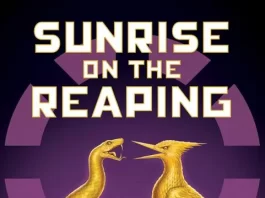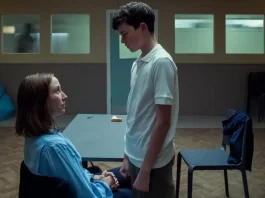Directed by Andy Muschietti, 2017’s adaptation of Stephen King’s 1986 novel IT takes place in the fictional town of Derry, Maine: a place that’s somehow sinister, seems a little off, and where bad things tend to happen — notably to children — much more frequently than usual. Not only that, but every 27 years, things get far, far worse. Large numbers of kids and sometimes adults are killed or go missing under unusual circumstances, and within a relatively short time span. Almost as if something that lurks in the area is coming out of hiding every so often, and whatever “It” is, it’s full of nightmare fuel, and looking to feed.
Well, it’s been 27 years since the previous adaptation of the book, a two-part TV miniseries, was released in 1990, and now It is back to terrorize Derry and moviegoers alike.
The main characters of this tale, aside from the infamous and terrifying Pennywise, are seven middle school kids, all of who are bullied to one degree or another for various reasons and made to feel like outsiders. Coming together, they form a strong bond through their shared struggles, calling themselves the “Losers’ Club”: shy Ben Hanscom, the “new kid” who gets picked on for being overweight; “Trashmouth” Richie Tozier (played by Finn Wolfhard of Stranger Things), who wears Coke-bottle glasses, and is constantly saying things that get him into trouble; the seemingly fragile Eddie Kaspbrak, never far from his asthma inhaler and overbearing mother; pragmatic Stan, often targeted for being quiet and Jewish; home-schooled Mike Hanlon, who also faces racial discrimination as an African American in a predominantly Caucasian town; Bev Marsh, the only girl in the group, who has an abusive father and is often the subject of cruel, false rumours; and stuttering Bill Denbrough, the unofficial leader of the group, and whose younger brother Georgie mysteriously disappeared one night while out playing in the rain.
Though the film does a decent job trying to stay true to the source material, there have definitely been some changes made — some, I think, for the better. One of the most notable changes, and the cause for many others, is that the story is now set in the ‘80s as opposed to the ‘50s, and taking place in the more recent era definitely shifts the dynamic. And even though not all of the content from the book can or even necessarily should be included in a film adaptation, there are still some great nods to both it and even the miniseries throughout, such as Bill dropping a Lego turtle in one scene, a reference to a character found in the novel named Mataurin, and one very creepy uttering of the phrase, “Beep, beep, Richie!” which was often used by the other kids as a way to tell Richie to shut up. A clown can also be seen in one scene that looks identical to Tim Curry’s Pennywise.
As much as Curry’s Pennywise will always be iconic, admittedly, Bill Skarsgård’s is even more accurate to the novel’s vision of a cosmic, evil being with a very other-worldly feel. The new iteration takes full advantage of current CGI technology, and the even more incredible effects work well with the clever acting, amplifying the visual horror along with the psychological. The titular It is not actually a clown, but a shapeshifting entity that tries to manifest our deepest fears. How frightening you find his most common form of Pennywise the Dancing Clown will depend on your personal feelings towards clowns — I admittedly did not find him to be overly scary in those scenes, but felt they were still effectively done. The different manifestations of the children’s fears were fantastic; among them, one original change made for the film was particularly unsettling, and very reminiscent of (possibly even an intentional homage to) another of Mushcietti’s films, 2013’s Mama.
This film’s pacing seems a little fast at times, quickly bouncing from one event to the next, and not as much time is devoted to character development as I would have liked. However, this is understandable given the amount of content that is covered, despite the film focusing on only the first chronological half of the story. But a reasonable attempt is made to at least touch on the back stories of everyone in the Losers’ Club, which, combined with the chemistry between and fantastic acting by the main cast, makes it easy to become invested in the characters and their plights. The movie is as much a drama/thriller as a horror, and the web of relationships among the members of the Loser’s Club is always at its core.
Despite some parts feeling a tad rushed, the film still does a sufficient job of building tension, and provides some decent scares. The atmosphere and ambiance are well set, and complimented by the amazing, spooky soundtrack. It does run a bit long at two hours and 15 minutes, but I personally didn’t find myself getting impatient or bored, and was glad the filmmakers chose to include the amount of content that they did. As a huge fan of King’s work, and its adaptations in the media, I found the remake to be a lot of fun, and would recommend it to both people previously familiar with the story, as well as those who are just looking for a half-decent horror flick.




